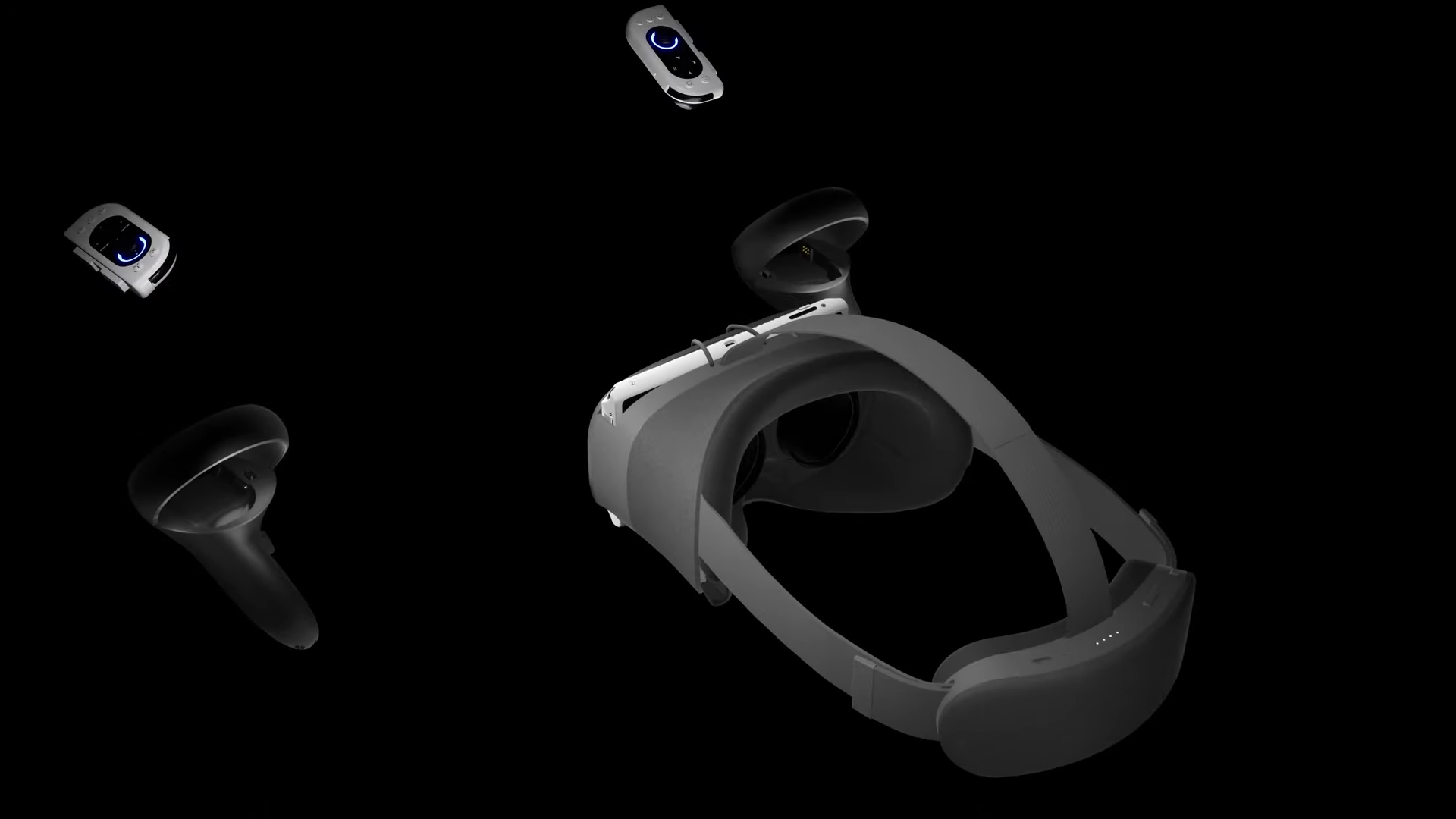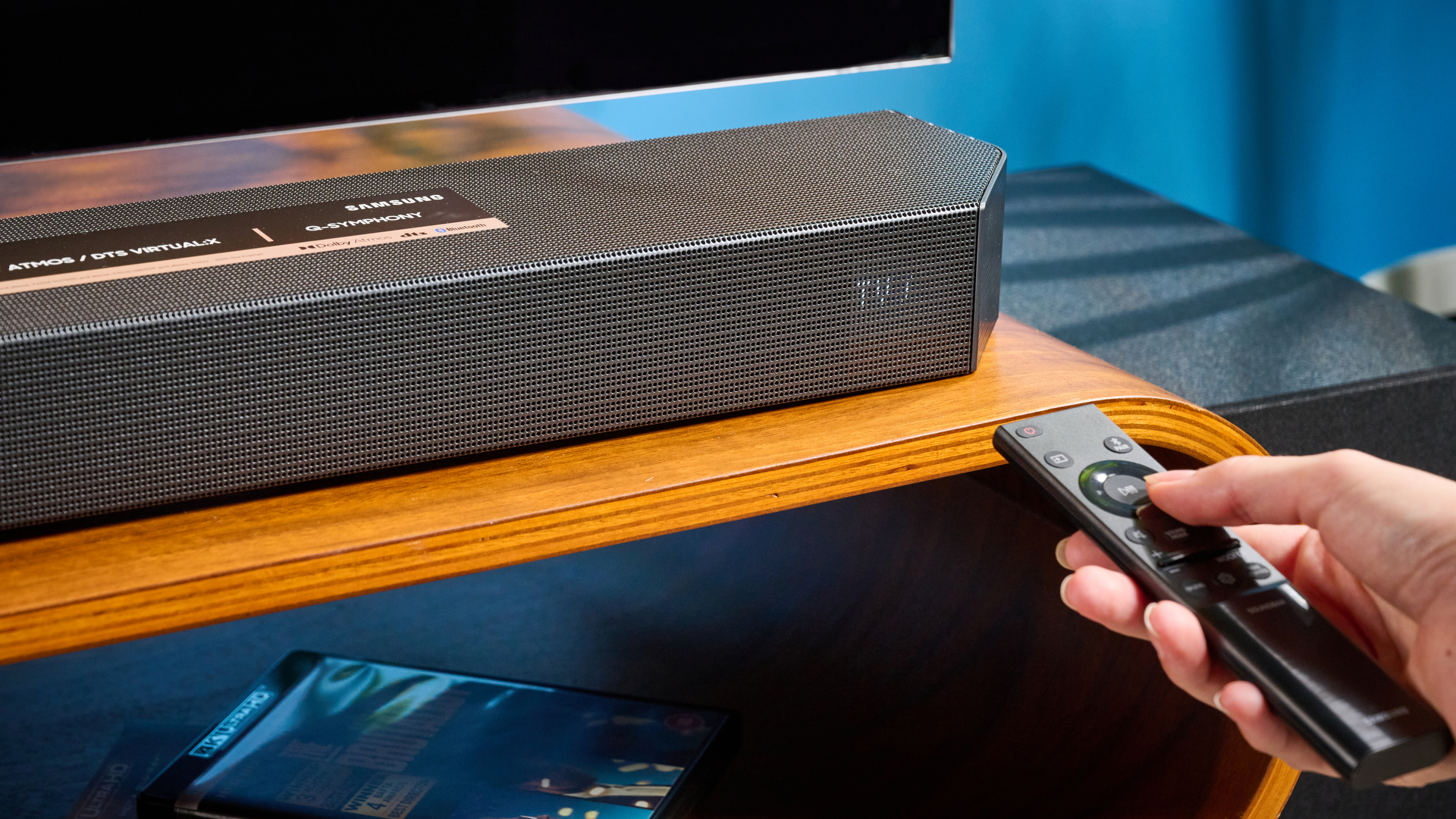Pimax Portal is (kind of) like a Meta Quest 2 and Steam Deck had a baby
This new gaming device promises an entire ecosystem in your hands

Virtual reality headsets are a lot of fun, but they’re not always the most convenient. The battery life on headsets like the Meta Quest 2 or PICO 4 can be lackluster and there’s the not-insignificant factor that they only work strapped to your face.
However, Pimax may be looking to change that. First reported by PC Gamer, Pimax has announced a new project called Pimax Portal, which looks to combine a handheld gaming device with a virtual reality headset. The OS is built to run all Android games but can also run some console emulators and, of course, VR games. The VR games must be streamed from a PC running Steam.
The specs on this device, if they come to fruition, are fairly impressive. The handheld screen promises a 4K QLED display with a 144Hz refresh rate. It also features a Qualcomm Snapdragon XR2 SoC processor, along with support for Bluetooth 5.1 and Wi-Fi 6E.
The virtual reality headset adds 3D surround sound, face tracking and eye tracking and a separate Pimax Airlink WiGig module allows wireless 60GHz connectivity to your PC to allow streaming VR games through Steam. There’s even a special edition headset that increases the Portal’s field of view to 140 degrees.
Pimax Portal: How does it switch from handheld to headset?
The process for switching back and forth from handheld to virtual reality headset actually seems fairly simple. All you need to do is remove the controllers from the headset — they appear to magnetically attach — and then grab a couple of items. The controllers slot into controller docks that resemble the Meta Quest 2 controllers. Then you drop the handheld gaming device itself into the VR headset dock, which has three different lens options.
The one other thing you’ll need to grab — an HDMI cable. The virtual reality gaming is all done through Steam, so you’ll need to attach the Portal to a gaming PC that can support VR gaming. There is an Airlink WiGig module available separately that allows you to wireless connect instead, though this may provide inferior results.
Pimax Portal: What’s the catch?

So there are a couple of issues that come to mind right away. First, the OS is based on Android, so you’ll largely be limited to mobile games. Maybe the Xbox Cloud Gaming app will work and Xbox Game Pass Ultimate subscribers will be able to stream Xbox games, but otherwise, it's mobile games or emulators. No full PC games like on the Steam Deck unless you stream from a PC using the WiGig Airlink or the Pimax Mini Station.
Get instant access to breaking news, the hottest reviews, great deals and helpful tips.
The Mini Station is touted as a PC that fits in your pocket featuring some great specs, including 32GB of RAM. There is currently no price for the Mini Station.
Second, the battery life is still to be determined — and I’m skeptical. Pimax says they dropped the biggest battery possible into the Portal but they neglected to mention the actual battery life. My guess? To get such great performance and excellent display quality you need a lot of juice. I would be shocked if the battery life is better than the current best virtual reality headsets.
Finally, this doesn’t exactly limit the hardware you need. You still need a headset and controllers and now you also need a handheld device and its own controllers. The Portal isn’t like the Nintendo Switch where you can play on the go and then dock at home to keep playing. The handheld games and VR games are entirely separate ecosystems.
So unless the Portal hits a lower price point than the combined cost of a Meta Quest 2 and a Steam Deck, it’s tough to see the justification for picking the Portal — at least for now. The performance and display quality would need to be significantly better than the current offerings on the market. Even if it is, the Portal’s setup sounds expensive when you add the WiGig Airlink module and the Mini Station.
Plus, who knows if any of these promises for the Pimax Portal pan out? As of this writing, there is no release date and while the touted specs and features sound great the execution may be less than stellar. So make sure to head over to our virtual reality headsets buying guide if you want to hop into VR in the near future.

Malcolm has been with Tom's Guide since 2022, and has been covering the latest in streaming shows and movies since 2023. He's not one to shy away from a hot take, including that "John Wick" is one of the four greatest films ever made.

